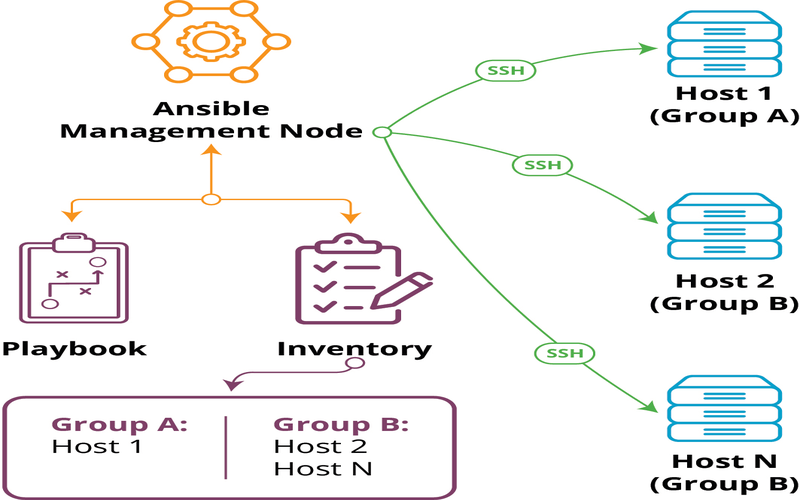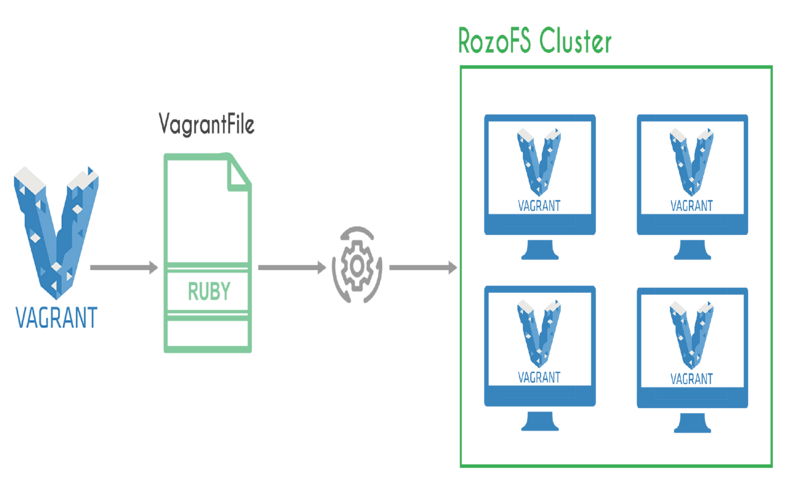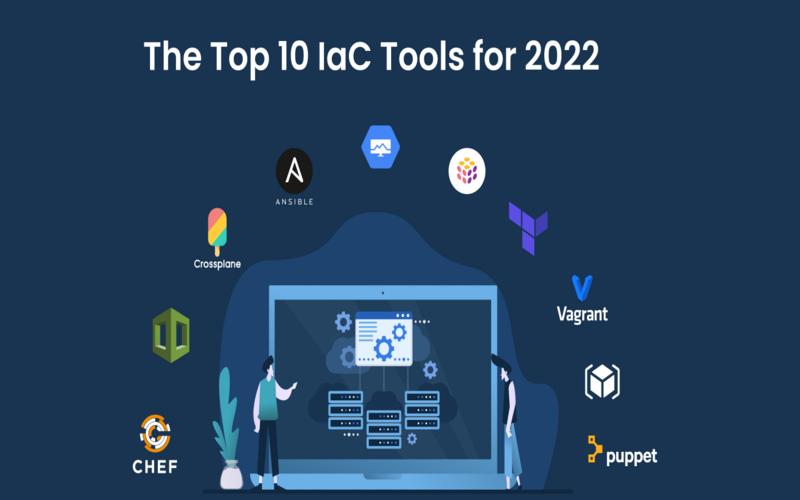What Is Infrastructure As Code?
The benefits of automation and remote provisioning, infrastructure as code, refer to the use of software code for resource provisioning in data centre and cloud environments rather than device settings or setup tools. Infrastructure as code is essential for the automated management of infrastructure. IAC stands for Infrastructure as Code, which is the management of data centres.
Terraform
- Another declarative provisioning and infrastructure control tool that enables engineers to remotely manage portions of their companies, local and Cloud infrastructure.
- No matter where physical servers, DNS servers, or databases are hosted, terraform connects with all of the top cloud providers and enables you to automate the setup of resources across several providers simultaneously. It can offer applications in any language.
- You can monitor resource changes as you deploy, thanks to Terraform’s current state.

Cloud Formation By AWS
AWS Cloud Formation is a service that enables programmers to consistently and predictably generate AWS resources. Resources are captured in text files with the JSON or YAML extension, and depending on the type of resource being created and managed, the templates have different syntax and structural requirements. The AWS environment deploys with the Cloud Formation design. The AWS Management Console, AWS Command Line Interface, or AWS Cloud Formation APIs can manage arrays.

1. Azure Resource Manager
The AWS Cloud Formation service enables developers to generate AWS resources. systematically and predictably. The system also provides the capability of rolling back changes if an error occurs. The Cloud Formation design has installed on AWS. AWS Management Console, Amazon Command Line Interface, and AWS Cloud Formation APIs may manage the stacks.

2. Google Cloud Deployment Manager
- A collection of Google Cloud services is managed as a single entity the resources are specific in a settings file, and the Deployment Manager is used to create, delete, or edit them.
- You can automate the creation and maintenance of Google Cloud resources with Google Cloud Deployment Manager.

3. Pulumi
- Pulumi is an open-source infrastructure as a coding platform that combines the most well-liked programming languages in the world (TypeScript, Go, NET, Python, and Java) with markup languages (YAML, CUE) to help teams transform the complexity of the cloud.
- Pulumi to deploy a simple application on AWS, Azure, Google Cloud, or Kubernetes.
- Declarative is how Pulumi is categorized. You can use the language of your choice to describe the current state of your cloud stack, and Pulumi will examine the environment, spot any deviations, and provide a set of instructions to change the atmosphere from its current state to the one you want.

4. Ansible
An open-source infrastructure as a code tool is called Ansible. It is employed to manage various server configurations from a single location. Instead of connecting to a single server and doing whatever action, it allows the setting of multiple servers simultaneously. It is lightweight and does not consume a lot of CPU resources. Ansible only needs SSH access to other servers to make changes. Its configuration files are written in a more intelligible YAML style.

5. Spectral Ops
Local code scanning by Spectral provides info to our servers. We won’t ever be a target of a supply-chain attack because the information (such credentials or tokens discovered) is sent outside of your machine. Spectral is the DSN (Data Source Name) for Spectral.

6. Chef
A powerful automation platform called Chef turns infrastructure into code. In a hybrid or cloud context, Chef manages infrastructure setup, deployment, and management across your network. You can start using Chef Infrastructure automation with the help of this hands-on introduction course. With the need for manual processes that frequently do not scale, Chef improved its solution for automating IT infrastructure management today.

7. Salt Stack
A solid automation framework is Salt. The idea of remotely carrying out commands forms the basis of the Salt system. The concept of remote execution comprises the design of all networking. It may be as simple as asking a remote web server to display a static web page, or it might be more complicated, like using a shell session to interactively send commands to a remote server. Salt is one of the more challenging varieties of remote execution.

8. Vagrant
An application called Hashicorp Vagrant allows users to build and maintain virtual machine environments in a single location. Its straightforward workflow and focus on automation shorten the setup time for development environments, improve production parity, and do away with the work on my machine defence.
- Establish a constant setup with the same settings.
- Create an environment with the required programs and modules.
- To connect with VM straight forward SSH Vagrant (name)

9. Puppet
- When compared to the other IAC tools on the list, Puppet is similar to Chef in many ways, it is the basis for many CI/CD pipelines built by DevOps experts. It uses a Ruby-based DSL that allows you to express the ultimate goal for your infrastructure and its current status.
- Puppet is an open-source configuration management tool that enables you to specify and control the configuration of your infrastructure as code. The application and maintenance of that state across your servers or cloud instances. It offers a comprehensive language for stating the intended shape of your infrastructure. You can automate infrastructure provision, configuration, and management with Puppet, which makes it simpler to grow and maintain.

10. Cross Plane
- It is an Open-Source project that functions as a control plane to provide cloud infrastructure, improving Kubernetes. Teams can use high-level self-service APIs provided by Cross-plane without writing any code.
- Cross-plane will let businesses construct their platforms in a similar way that cloud vendors help customers with control planes.


















